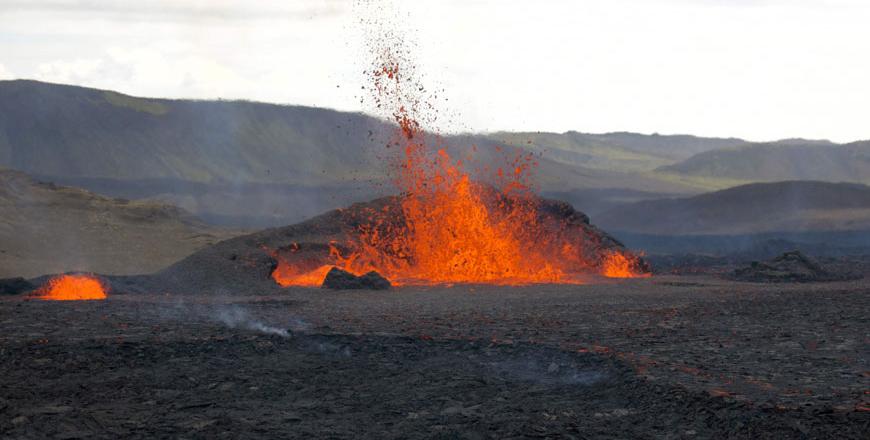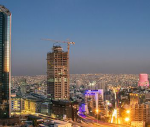You are here
Tens of thousands trek rugged trail to glimpse Iceland volcano
Aug 11,2022 - Last updated at Aug 11,2022

Lava spews from the vulcano in Fagradalsfjall, Iceland, around 40 kilometres from the capital Reykjavik, on Wednesday, following an eruption that has been ongoing since August 3 (AFP photo)
FAGRADALSFJALL, Iceland — Tens of thousands of people have braved a steep, rugged trail in Iceland to catch a rare glimpse of an active volcano after it erupted last week, spewing red-hot lava into the sky.
Tourism officials said on Thursday that almost 23,000 people had made the difficult, hours-long trek to spot the volcano in the Meradalir valley, just 40 kilometres from the capital.
“We’ve been here for three, four hours and we never get tired of it, it’s always moving,” said Jean-Paul Couturier, a French pensioner on vacation in Iceland.
The hike to the newly-formed crater is a 14 kilometres round-trip across tough terrain, with a 300 metre ascent. The walk takes about two hours from the nearest car park.
Strong winds and rain have done little to deter crowds.
On Wednesday alone — when authorities reopened the site following a three-day closure — more than 4,600 people took in the mesmerising views of the red-hot magma.
The volcano is located in the Meradalir valley, an uninhabited area that would normally not attract more than a few visitors.
Known as the land of fire and ice, Iceland has 32 volcanic systems currently considered active, the highest number in Europe. It had an eruption every five years on average.
The latest volcano erupted in the Meradalir valley on August 3 and has continued at a fairly stable rate since, the Icelandic Meteorological Office said.
‘Nature’s power’
“It would be very easy for it to last as long as the previous one,” vulcanologist Thorvaldur Thordarson told AFP.
Last year, lava spewed from the nearby Mount Fagradalsfjall volcano for six months, the longest eruption in Iceland in more than 50 years.
Hikers making the trek on Wednesday were well-equipped with walking sticks, hiking boots and rain gear.
It was a sharp contrast from the shorts and flip flops worn by some of the first curious onlookers who initially rushed to the scene.
Observers watch from a safe distance the red-orange lava fountains spurting as high as 70 metres before falling back to the ground, forming a large blanket of magma and a volcanic semi-cone as it solidified.
The lava reaches temperatures of 1,200ºC, the hottest lava produced on Earth, and has so far flowed almost two kilometres to the south across the valley.
“The hot rock shooting out of the earth is really the first most impressive thing that you see,” American tourist James Maniscalco said.
For French tourist Clemence Ernoult, the experience was as rare as it gets.
“You really see Nature’s power,” she said.
“It’s something you’ll probably only see once in your life”.
Related Articles
REYKJAVIK — Volcanic activity in southwest Iceland appears to have eased, authorities said on Monday, a day after lava from an eruption flow
REYKJAVIK — A volcano erupted just 40 kilometres from Iceland’s capital Reykjavik on Friday, turning the sky crimson and forcing the establi
TOKYO — Dozens of people were urged to evacuate their homes after a fiery volcanic eruption in southern Japan on Sunday as the national weat














